Learning Objectives
By the end of this section, you will be able to:
- Describe the basic properties of each physical state of matter: solid, liquid, and gas
- Define and give examples of atoms and molecules using microscopic descriptions
- Classify matter as an element, compound, homogeneous mixture, or heterogeneous mixture with regard to its physical state and composition (macroscopic and microscopic descriptions)
- Apply the law of conservation of matter (macroscopic and microscopic descriptions)
Matter is defined as anything that occupies space and has mass, and it is all around us. Solids and liquids are more obviously matter: We can see that they take up space, and their weight tells us that they have mass. Gases are also matter; if gases did not take up space, a balloon would stay collapsed rather than inflate when filled with gas.
Solids, liquids, and gases are the three states of matter commonly found on earth (Figure 1). A solid is rigid and possesses a definite shape. A liquid flows and takes the shape of a container, except that it forms a flat or slightly curved upper surface when acted upon by gravity. A gas takes both the shape and volume of its container.
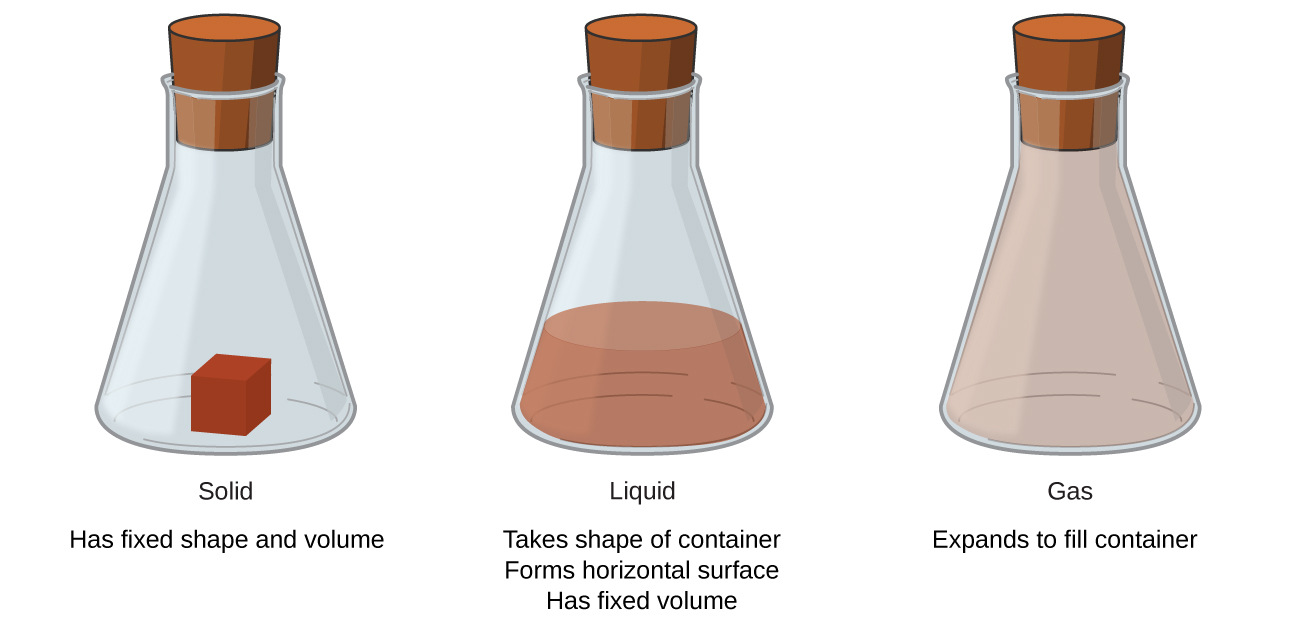
On the molecular level:
Solid: Atoms or molecules are in close contact, often in a highly organized arrangement.
Liquid: Atoms or molecules are in close proximity, but individual atoms and molecules can pass across one another.
Gas: Atoms or molecules are far apart and move freely (very few forces between them).
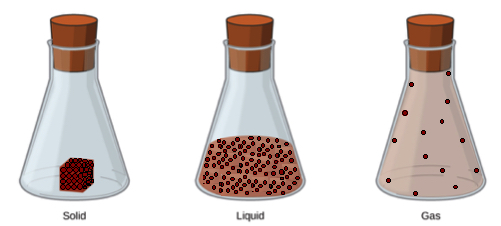
A fourth state of matter, plasma, occurs naturally in the interiors of stars, and in some other high-temperature environments (both natural and man-made), such as lightning strikes, certain television screens, and specialized analytical instruments used to detect trace amounts of metals.
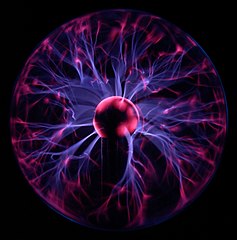
In a tiny cell in a plasma television, the plasma emits ultraviolet light, which in turn causes the display at that location to appear a specific color. The composite of these tiny dots of color makes up the image that you see. If you are curious you can watch this video to learn more. Prefer to learn en espanol? This video provides lots of good information.
Some samples of matter appear to have properties of solids, liquids, and/or gases at the same time. This can occur when the sample is composed of many small pieces. For example, we can pour sand as if it were a liquid because it is composed of many small grains of solid sand. Matter can also have properties of more than one state when it is a mixture, such as with clouds. Clouds appear to behave somewhat like gases, but they are actually mixtures of air (gas) and tiny particles of water (liquid or solid).
The mass of an object is a measure of the amount of matter in it. One way to measure an object’s mass is to measure the force it takes to accelerate the object. It takes much more force to accelerate a car than a bicycle because the car has much more mass. A more common way to determine the mass of an object is to use a balance to compare its mass with a standard mass.
Although weight is related to mass, it is not the same thing. Weight refers to the force that gravity exerts on an object. This force is directly proportional to the mass of the object. The weight of an object changes as the force of gravity changes, but its mass does not. To illustrate, the force of gravity varies in space, an astronaut’s weight will be different on the moon, while their mass remains unchanged.
Since most of our experiences occur in the fairly constant gravitational field on earth, we can usually consider mass and weight interchangeable.
The law of conservation of matter summarizes many scientific observations about matter: It states that there is no detectable change in the total quantity of matter present when matter converts from one type to another (a chemical change) or changes among solid, liquid, or gaseous states (a physical change). Brewing beer and the operation of batteries provide examples of the conservation of matter (Figure 4). During the brewing of beer, the ingredients (water, yeast, grains, malt, hops, and sugar) are converted into beer (water, alcohol, carbonation, and flavoring substances) with no actual loss of substance. This is most clearly seen during the bottling process, when glucose turns into ethanol and carbon dioxide, and the total mass of the substances does not change. This can also be seen in a lead-acid car battery: The original substances (lead, lead oxide, and sulfuric acid), which are capable of producing electricity, are changed into other substances (lead sulfate and water) that do not produce electricity, with no change in the actual amount of matter.
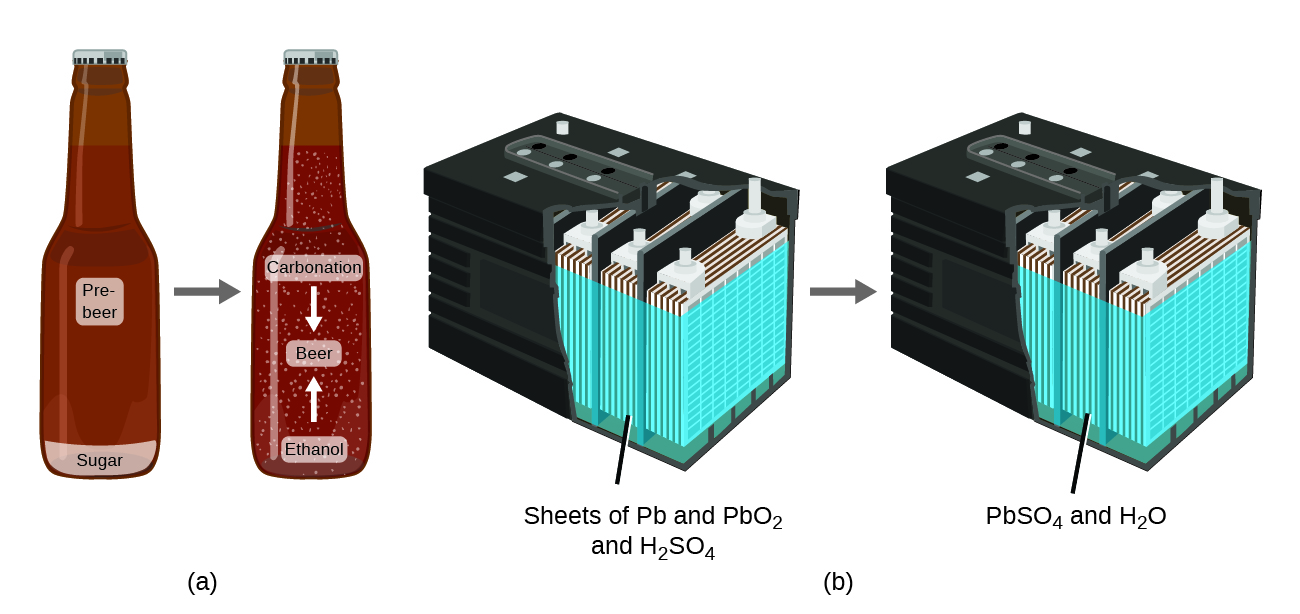
Although this conservation law holds true for all conversions of matter, convincing examples are few and far between because, outside of the controlled conditions in a laboratory, we seldom collect all of the material that is produced during a particular conversion.
Atoms and Molecules
An atom is the smallest particle of an element that has the properties of that element and can enter into a chemical combination. Consider the element gold, for example. Imagine cutting a gold nugget in half, then cutting one of the halves in half, and repeating this process until a piece of gold remained that was so small that it could not be cut in half (regardless of how tiny your knife may be). This minimally sized piece of gold is an atom (from the Greek atomos, meaning “indivisible”) (Figure 5). This atom would no longer be gold if it were divided any further.
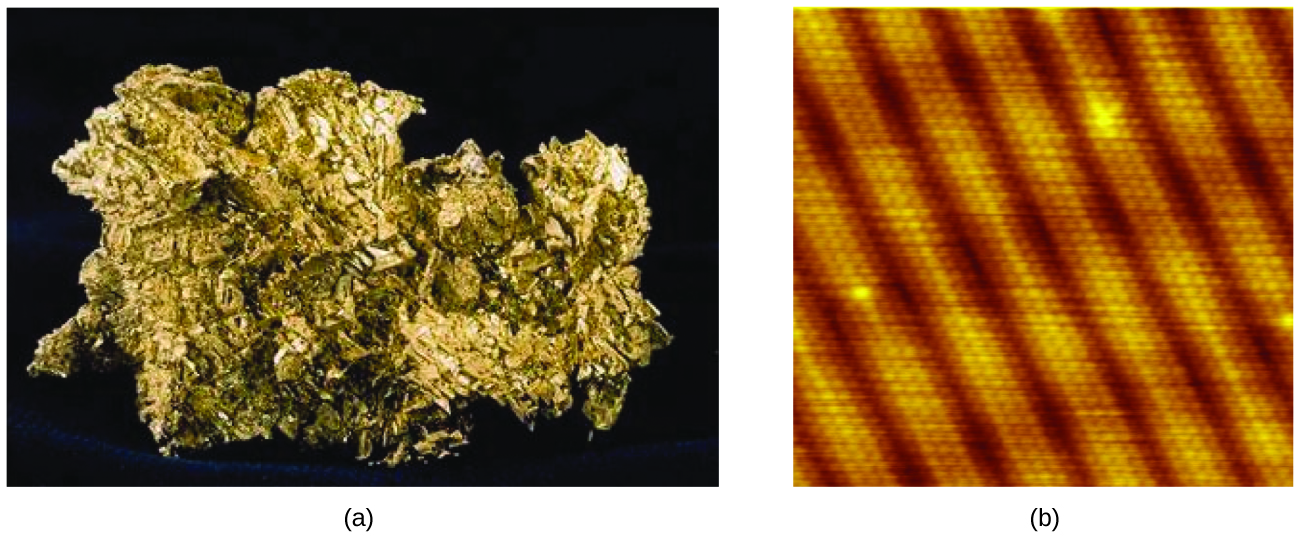
The first suggestion that matter is composed of atoms is attributed to the Greek philosophers Leucippus and Democritus, who developed their ideas in the 5th century BCE. However, it was not until the early nineteenth century that John Dalton (1766–1844), a British schoolteacher with a keen interest in science, supported this hypothesis with quantitative measurements. Since that time, repeated experiments have confirmed many aspects of this hypothesis, and it has become one of the central theories of chemistry.
An atom is so small that its size is difficult to imagine. One of the smallest things we can see with our unaided eye is a single thread of a spider web: These strands are about 1/10,000 of a centimeter (0.0001 cm) in diameter. Although the cross-section of one strand is almost impossible to see without a microscope, it is huge on an atomic scale. A single carbon atom in the web has a diameter of about 0.000000015 centimeter, and it would take about 7000 carbon atoms to span the diameter of the strand. To put this in perspective, if a carbon atom were the size of a dime, the cross-section of one strand would be larger than a football field, which would require about 150 million carbon atom “dimes” to cover it. (Figure 6) shows increasingly close microscopic and atomic-level views of ordinary cotton.

An atom is so light that its mass is also difficult to imagine. A billion lead atoms (1,000,000,000 atoms) weigh about 3 × 10−13 grams, a mass that is far too light to be weighed on even the world’s most sensitive balances. It would require over 300,000,000,000,000 lead atoms (300 trillion, or 3 × 1014) to be weighed, and they would weigh only 0.0000001 gram.
It is rare to find collections of individual atoms. Only a few elements, such as the gases helium, neon, and argon, consist of a collection of individual atoms that move about independently of one another. Other elements, such as the gases hydrogen, nitrogen, oxygen, and chlorine, are composed of units that consist of pairs of atoms (Figure 7). One form of the element phosphorus consists of units composed of four phosphorus atoms. The element sulfur exists in various forms, one of which consists of units composed of eight sulfur atoms. These units are called molecules. A molecule consists of two or more atoms joined by strong forces called chemical bonds. The atoms in a molecule move around as a unit, much like the cans of soda in a six-pack or a bunch of keys joined together on a single key ring. A molecule may consist of two or more identical atoms, as in the molecules found in the elements hydrogen, oxygen, and sulfur, or it may consist of two or more different atoms, as in the molecules found in water. Each water molecule is a unit that contains two hydrogen atoms and one oxygen atom. Each glucose molecule is a unit that contains 6 carbon atoms, 12 hydrogen atoms, and 6 oxygen atoms. Like atoms, molecules are incredibly small and light. If an ordinary glass of water were enlarged to the size of the earth, the water molecules inside it would be about the size of golf balls.

Classifying Matter
We can classify matter into several categories. Two broad categories are mixtures and pure substances. A pure substance has a constant composition. All specimens of a pure substance have exactly the same makeup and properties. Any sample of sucrose (table sugar) consists of 42.1% carbon, 6.5% hydrogen, and 51.4% oxygen by mass. Any sample of sucrose also has the same physical properties, such as melting point, color, and sweetness, regardless of the source from which it is isolated.
We can divide pure substances into two classes: elements and compounds. Pure substances that cannot be broken down into simpler substances by chemical changes are called elements. Iron, silver, gold, aluminum, sulfur, oxygen, and copper are familiar examples of the more than 100 known elements, of which about 90 occur naturally on the earth, and two dozen or so have been created in laboratories.
Pure substances that can be broken down by chemical changes are called compounds. This breakdown may produce either elements or other compounds, or both. Mercury(II) oxide, an orange, crystalline solid, can be broken down by heat into the elements mercury and oxygen (Figure 8). When heated in the absence of air, the compound sucrose is broken down into the element carbon and the compound water. Silver(I) chloride is a white solid that can be broken down into its elements, silver and chlorine, by absorption of light. This property is the basis for the use of this compound in photographic films and photochromic eyeglasses (those with lenses that darken when exposed to light).


Many compounds break down when heated. This site shows the breakdown of mercury oxide, HgO. You can also view an example of the photochemical decomposition of silver chloride (AgCl), the basis of early photography.
The properties of combined elements are different from those in the free, or uncombined, state. For example, white crystalline sugar (sucrose) is a compound resulting from the chemical combination of the element carbon, which is a black solid in one of its uncombined forms, and the two elements hydrogen and oxygen, which are colorless gases when uncombined. Free sodium, an element that is a soft, shiny, metallic solid, and free chlorine, an element that is a yellow-green gas, combine to form sodium chloride (table salt), a compound that is a white, crystalline solid.
A mixture is composed of two or more types of matter that can be present in varying amounts and can be physically separated by using methods that use physical properties to separate the components of the mixture, such as evaporation, distillation, and filtration (you will learn more about this later). A mixture with a composition that varies from point to point is called a heterogeneous mixture. Examples of heterogeneous mixtures include chocolate chip cookies (we can see the separate bits of chocolate, nuts, and cookie dough) and granite (we can see the quartz, mica, feldspar, and more).
A homogeneous mixture, also called a solution, exhibits a uniform composition and appears visually the same throughout. An example of a solution is a sports drink, consisting of water, sugar, coloring, flavoring, and electrolytes mixed together uniformly (Figure 9). Each drop of a sports drink tastes the same because each drop contains the same amounts of water, sugar, and other components. Note that the composition of a sports drink can vary—it could be made with somewhat more or less sugar, flavoring, or other components, and still be a sports drink. Other examples of homogeneous mixtures include air, maple syrup, gasoline, and a solution of salt in water.

Although there are just over 100 elements, tens of millions of chemical compounds result from different combinations of these elements. Each compound has a specific composition and possesses definite chemical and physical properties by which we can distinguish it from all other compounds. And, of course, there are innumerable ways to combine elements and compounds to form different mixtures. A summary of how to distinguish between the various major classifications of matter is shown in (Figure 10).
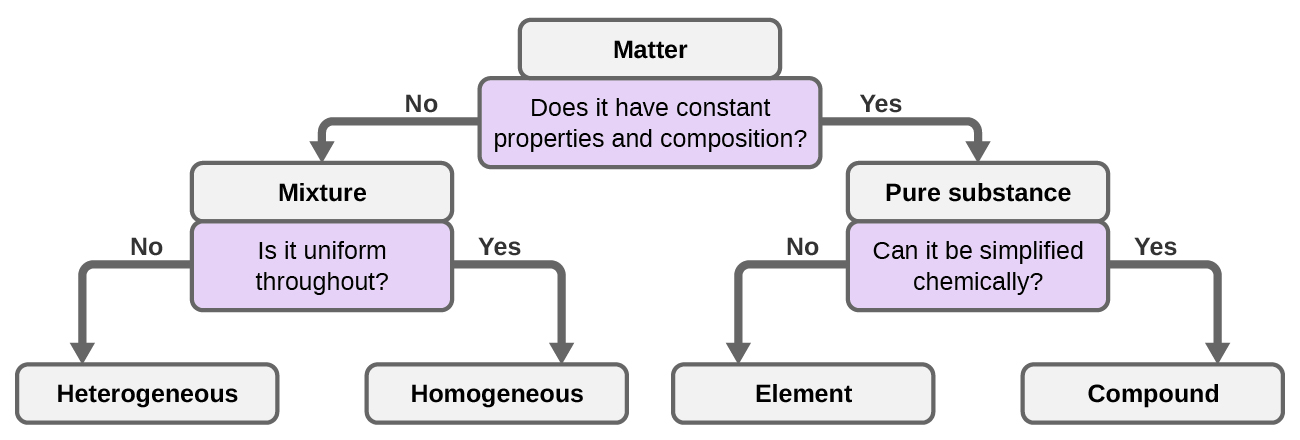
Example 1
For the following substances, decide if it is a pure element, a pure compound, a homogeneous mixture or a heterogeneous mixture. Briefly explain your choice.
a) muddy water b) copper c) distilled water d) sea water
Solution
a) Heterogeneous mixture.Muddy water is a mixture because the there are at least two components (mud and water) and the amount of mud in the water can vary (not fixed proportions). It is heterogeneous because the mud is likely not evenly distributed throughout.
b) Pure element.Copper is found on the periodic table, therefore it is an element. No other atom types are mentioned, so we presume it is pure.
c) Pure compound.The process of distillation is meant to purify the water, so we presume no other substances are in the sample. Water is made of two atom types so this is a compound.
d) Homogeneous mixture.This is a mixture, as we know there is salt and water, and they can be present in different proportions (more or less salty water). Presuming there are no floating bits or living things in the sample, the salt is uniform in its distribution in the water (being dissolved or mixed at the atomic level), therefore this is homogeneous.
Test Yourself
For the following substances, decide if it is a pure element, a pure compound, a homogeneous mixture or a heterogeneous mixture. Briefly explain your choice.
a) gold b) ice c) beer d) vitamin C
Answers
a) Pure element.Gold is found on the periodic table, therefore it is an element. No other atom types are mentioned, so we presume it is pure.
b) Pure compound. If we presume the water was purified. If we imagine there was dissolved material in the water (typical for tap water), when it froze it would contain these other substances in a non-uniform distribution, in which case we would call it a heterogeneous mixture.
c) Homogeneous mixture.Beer is a mixture, and the components are uniformly distributed. If we presume there are bubbles, certainly they would not be uniformly distributed, and therefore we would classify it as a heterogeneous mixture.
d) Pure compound. Vitamin C is comprised of several different atom types present in a fixed proportion (distinct molecules of a particular construct).
Example 2
Identify the following combinations as heterogeneous mixtures or homogenous mixtures.
a) soda water (Carbon dioxide is dissolved in water.)
b) a mixture of iron metal filings and sulfur powder (Both iron and sulfur are elements.)
Solution
a) Because carbon dioxide is dissolved in water, we can infer from the behaviour of salt crystals dissolved in water that carbon dioxide dissolved in water is (also) a homogeneous mixture.
b) Assuming that the iron and sulfur are simply mixed together, it should be easy to see what is iron and what is sulfur, so this is a heterogeneous mixture.
Chemistry Is Everywhere: In the Morning
Most people have a morning ritual, a process that they go through every morning to get ready for the day. Chemistry appears in many of these activities.
- If you take a shower or bath in the morning, you probably use soap, shampoo, or both. These items contain chemicals that interact with the oil and dirt on your body and hair to remove them and wash them away. Many of these products also contain chemicals that make you smell good; they are called fragrances.
- When you brush your teeth in the morning, you usually use toothpaste, a form of soap, to clean your teeth. Toothpastes typically contain tiny, hard particles called abrasives that physically scrub your teeth. Many toothpastes also contain fluoride, a substance that chemically interacts with the surface of the teeth to help prevent cavities.
- Perhaps you take vitamins, supplements, or medicines every morning. Vitamins and other supplements contain chemicals your body needs in small amounts to function properly. Medicines are chemicals that help combat diseases and promote health.
- Perhaps you make some fried eggs for breakfast. Frying eggs involves heating them enough so that a chemical reaction occurs to cook the eggs.
- After you eat, the food in your stomach is chemically reacted so that the body (mostly the intestines) can absorb food, water, and other nutrients.
- If you drive or take the bus to school or work, you are using a vehicle that probably burns gasoline, a material that burns fairly easily and provides energy to power the vehicle. Recall that burning is a chemical change.

These are just a few examples of how chemistry impacts your everyday life. And we haven’t even made it to lunch yet!
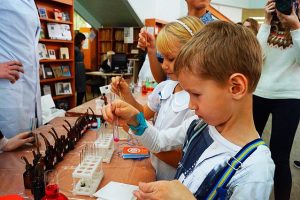
Everything is Chemistry!
Check out the collection of videos at ACS Reactions on YouTube.
Chemistry of Cell Phones
Imagine how different your life would be without cell phones (Figure 12) and other smart devices. Cell phones are made from numerous chemical substances, which are extracted, refined, purified, and assembled using an extensive and in-depth understanding of chemical principles. About 30% of the elements that are found in nature are found within a typical smart phone. The case/body/frame consists of a combination of sturdy, durable polymers comprised primarily of carbon, hydrogen, oxygen, and nitrogen [acrylonitrile butadiene styrene (ABS) and polycarbonate thermoplastics], and light, strong, structural metals, such as aluminum, magnesium, and iron. The display screen is made from a specially toughened glass (silica glass strengthened by the addition of aluminum, sodium, and potassium) and coated with a material to make it conductive (such as indium tin oxide). The circuit board uses a semiconductor material (usually silicon); commonly used metals like copper, tin, silver, and gold; and more unfamiliar elements such as yttrium, praseodymium, and gadolinium. The battery relies upon lithium ions and a variety of other materials, including iron, cobalt, copper, polyethylene oxide, and polyacrylonitrile.
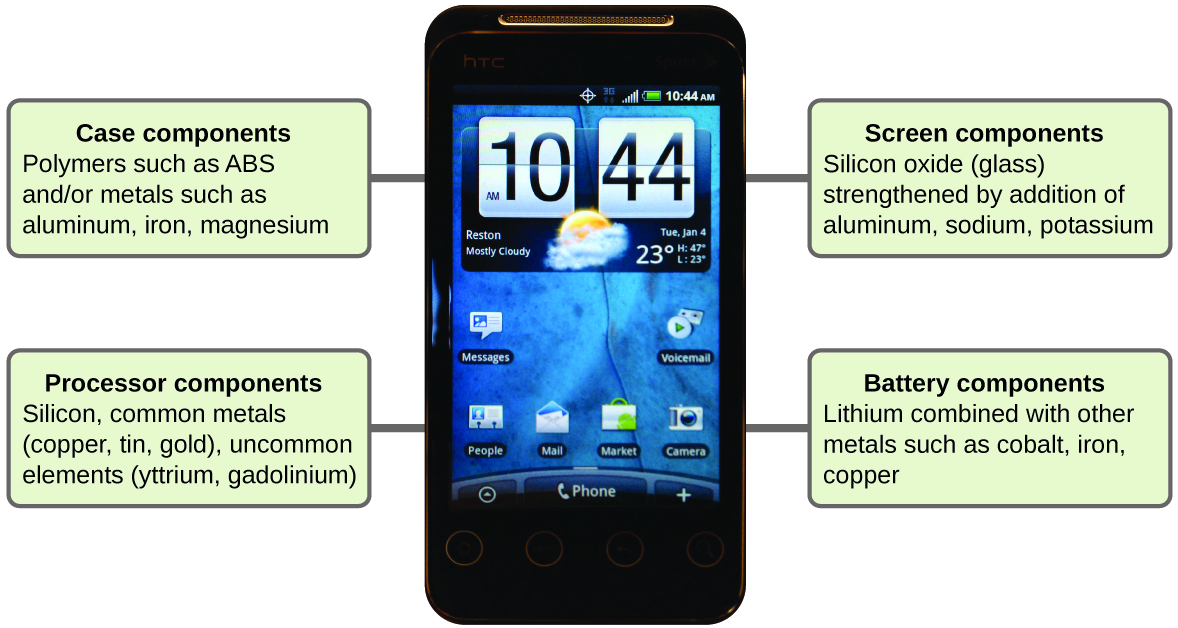
Key Concepts and Summary
Matter is anything that occupies space and has mass. The basic building block of matter is the atom, the smallest unit of an element that can enter into combinations with atoms of the same or other elements. In many substances, atoms are combined into molecules. On earth, matter commonly exists in three states: solids, of fixed shape and volume; liquids, of variable shape but fixed volume; and gases, of variable shape and volume. Most matter is a mixture: It is composed of two or more types of matter that can be present in varying amounts and can be separated by physical means. Heterogeneous mixtures vary in composition from point to point; homogeneous mixtures have the same composition from point to point. Pure substances consist of only one type of matter. A pure substance can be an element, which consists of only one type of atom and cannot be broken down by a chemical change, or a compound, which consists of two or more types of atoms.
Review-Refresh, Extend
Review-Refresh
1. What properties distinguish solids from liquids? Liquids from gases? Solids from gases?
2. How does a homogeneous mixture differ from a pure substance? How are they similar?
3. How do molecules of elements and molecules of compounds differ? In what ways are they similar?
4. Many of the items you purchase are mixtures of pure compounds. Select one of these commercial products, such as shampoo, and count up the ingredients that are pure compounds. Is anything listed in the ingredients likely a mixture rather than a pure compound? What makes you think so?
5. When elemental iron corrodes it combines with oxygen in the air to ultimately form red brown iron(III) oxide which we call rust. a) If a shiny iron nail with an initial mass of 23.2 g is weighed after being coated in a layer of rust, would you expect the mass to have increased, decreased, or remained the same? Explain. b) If the mass of the iron nail increases to 24.1 g, what mass of oxygen combined with the iron?
Extend
- Look up sodium dodecyl sulfate on Wikipedia. Is this substance an element, a pure compound, or a mixture? What is its physical state under normal room conditions? Within the Wikipedia page identify parts of the description of this substance that would be classified as macroscopic, microscopic, and symbolic descriptions.
Answers to Review-Refresh
1. Liquids can change their shape (flow); solids can’t. Gases can undergo large volume changes as pressure changes; liquids do not. Gases flow and change volume; solids do not.
2. The mixture can have a variety of compositions; a pure substance has a definite composition. Both have the same composition from point to point.
3. Molecules of elements contain only one type of atom; molecules of compounds contain two or more types of atoms. They are similar in that both are comprised of two or more atoms chemically bonded together.
4. Answers will vary. The list of pure compounds put together into the mixture we call shampoo is likely quite long. Each pure compound is likely to have a chemical name that uses chemical language (e.g. “sodium dodecyl sulfate”). Ingredients listed with general terms, such as “fragrance” are likely mixtures.
5. a) Increased as it would have combined with oxygen in the air thus increasing the amount of matter and therefore the mass. b) 0.9 g
Glossary
atom: smallest particle of an element that can enter into a chemical combination
compound: pure substance that can be decomposed into two or more elements
element: substance that is composed of a single type of atom; a substance that cannot be decomposed by a chemical change
gas: state in which matter has neither definite volume nor shape
heterogeneous mixture: combination of substances with a composition that varies from point to point
homogeneous mixture: (also, solution) combination of substances with a composition that is uniform throughout
liquid: state of matter that has a definite volume but indefinite shape
law of conservation of matter: when matter converts from one type to another or changes form, there is no detectable change in the total amount of matter present
mass: fundamental property indicating amount of matter
matter: anything that occupies space and has mass
mixture: matter that can be separated into its components by physical means
molecule: bonded collection of two or more atoms of the same or different elements
plasma: gaseous state of matter containing a large number of electrically charged atoms and/or molecules
pure substance: homogeneous substance that has a constant composition
solid: state of matter that is rigid, has a definite shape, and has a fairly constant volume
weight: force that gravity exerts on an object
